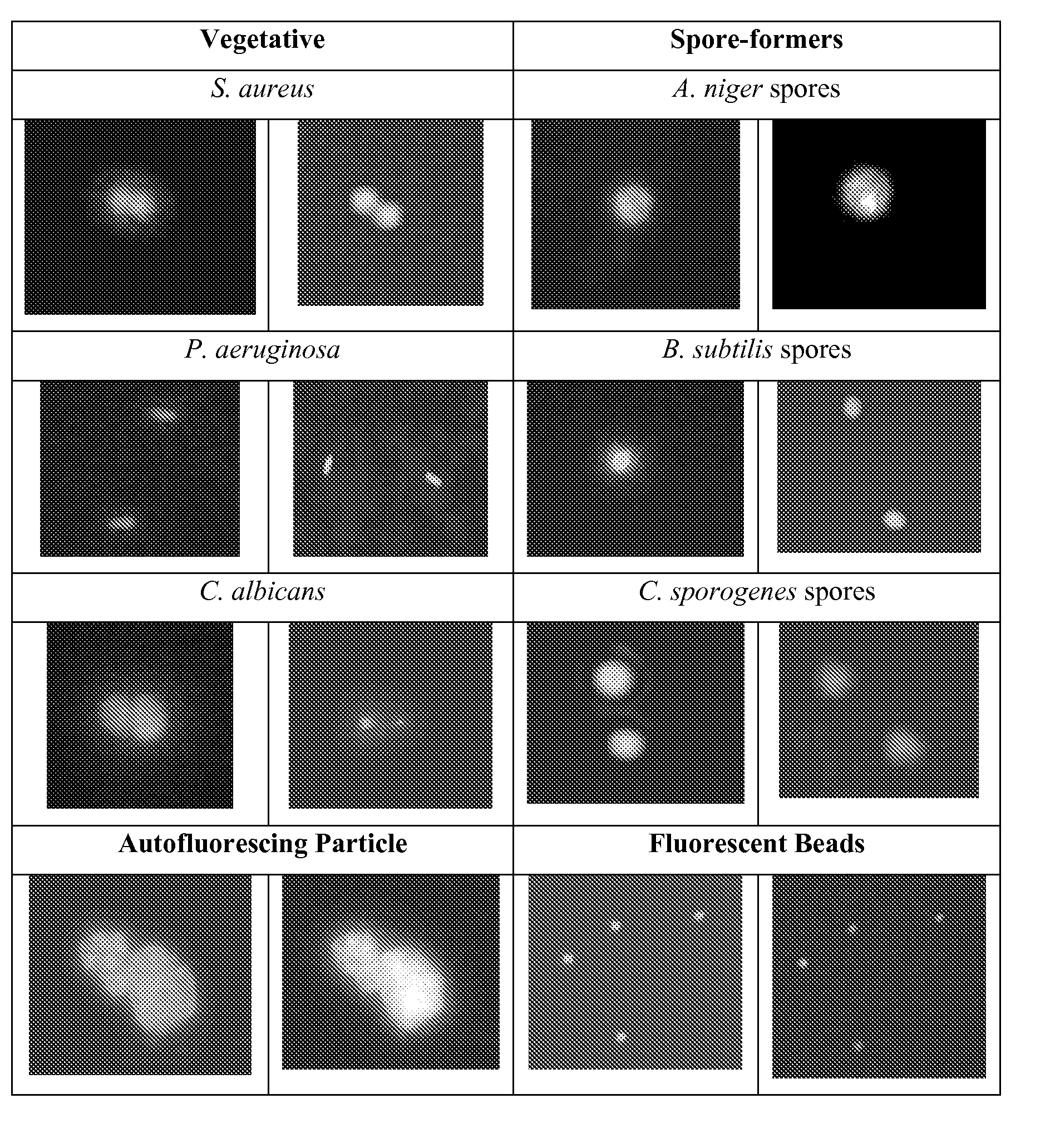Method for detecting microbes
a microorganism and detection method technology, applied in the field of sampling methods, can solve the problems of high variability, unfitness as a potable water source, quantitative and qualitative limitations, etc., and achieve the effect of reducing false positive results
- Summary
- Abstract
- Description
- Claims
- Application Information
AI Technical Summary
Benefits of technology
Problems solved by technology
Method used
Image
Examples
examples
[0022]The following examples are presented to further illustrate selected embodiments of the present invention. When evaluating samples for events such as would occur in sterility testing, it is important to have a secondary tool to evaluate whether or not an event is actually a biological cell. Analysts use their training and experience to determine if the event has a characteristic shape of a cell or if it is a particle. A secondary staining technique was developed and validated against six sterility test reference strains for determining if an event is a microorganism or a particle.
Microorganisms
[0023]Staphylococcus aureus ATCC 6538 and Pseudomonas aeruginosa ATCC 9027 were maintained on Soybean Casein-Digest Agar. Candida albicans ATCC 10231 was maintained on Sabouraud Dextrose Agar. Bacillus subtilis ATCC 6633, Aspergillus niger ATCC 16404 and Clostridium sporogenes ATCC 11437 were maintained as spore suspensions.
[0024]The Chemunex Scan RDI™ system co...
PUM
 Login to View More
Login to View More Abstract
Description
Claims
Application Information
 Login to View More
Login to View More - R&D
- Intellectual Property
- Life Sciences
- Materials
- Tech Scout
- Unparalleled Data Quality
- Higher Quality Content
- 60% Fewer Hallucinations
Browse by: Latest US Patents, China's latest patents, Technical Efficacy Thesaurus, Application Domain, Technology Topic, Popular Technical Reports.
© 2025 PatSnap. All rights reserved.Legal|Privacy policy|Modern Slavery Act Transparency Statement|Sitemap|About US| Contact US: help@patsnap.com



